15 Pollinating Animals


Reviewed and approved by the biologist Samuel Sanchez
Not all crops need pollinating animals or other types of pollination: rice, wheat and potatoes are examples of this. However, many of our nutritious and micronutrient-rich foods would disappear without these animals, such as fruits, some vegetables, seeds, nuts, and oils.
Can you imagine a life without these foods? Without the work of certain animals, birds, and insects, strawberries, apples, blueberries, cherries, cocoa and coffee would cease to exist, as more than 75% of the world’s crops depend on pollinating animals. Be surprised and discover 15 of them here.
What’s pollination?
The Food and Agriculture Organization of the United Nations (FAO) says that pollination is the transfer of pollen (the male cell) from the stamens (the male part of the flower) to the stigma (the female part of the flower). This process makes fertilization possible, and, therefore, the production of fruits and seeds.
This work can be carried out by animals (biotic vectors) or by water and wind (abiotic vectors). Even so, the vast majority of flowering plants depend on living beings, mainly insects.
Types of pollination
There are several types of pollination. Among them are direct pollination, cross-pollination, and the artificial type. We’ll tell you all about its peculiarities in the following lines.
Direct pollination
Many vegetables are hermaphrodites, which means that they have the male and female reproductive systems in the same flower, but these almost never reproduce together. When it happens, this type of direct pollination – or self-pollination – is called autogamy.
Another type of direct pollination is geitonogamy. According to professionals, in this case the pollen doesn’t come from the flower itself, but from another flower of the same plant.
Cross-pollination
In this type of pollination, fertilization occurs thanks to the fact that the pollen is transported to the flower of another plant. This exchange can be due to both biotic and abiotic factors. Within biotics are all the tasks performed by animals, be they insects, birds or others. On the other hand, abiotic pollination happens thanks to wind or water.
Artificial pollination
Artificial pollination occurs when there’s a human intervention due to a shortage of natural fertilizing agents in an agricultural crop or when we want to avoid alterations in a plant. In order for this to occur, the pollen of the stamen is collected and transferred to the stigma to produce fertilization.
Pollinating animals: insects
The pollination carried out by insects is called entomophilous and is undoubtedly one of the most important, as Insecta is the largest group in the animal kingdom and its size is perfect for this task. Within this group are the Hymenoptera (bees, bumblebees, ants and wasps), Coleoptera (beetles), Diptera (flies) and Lepidoptera (butterflies and moths).
Hymenopterans prefer plants with large amounts of pollen or nectar, Coleopterans like angiosperms, Dipterans make for small, odorless flowers, and Lepidopterans go for large elongated tube-shaped flowers, perfect for the shape of their mouthparts. Let’s have a closer look at them.
1. Butterflies
Butterflies play a critical role in plants and the production of our food crops. They have scales and hairs, on which the pollen adheres while they consume the nectar, and then disperse it.
Professional reports say that they’re living organisms present in all terrestrial ecosystems, especially tropical ones. They’re used as bioindicators because they help us to interpret the state of conservation and any changes in a specific environment or ecosystem.
However, the populations of some species – and that of many other pollinators such as bees – have decreased in a worrying way due to intensive agricultural practices, pesticides, invasive species and climate change, among other factors.
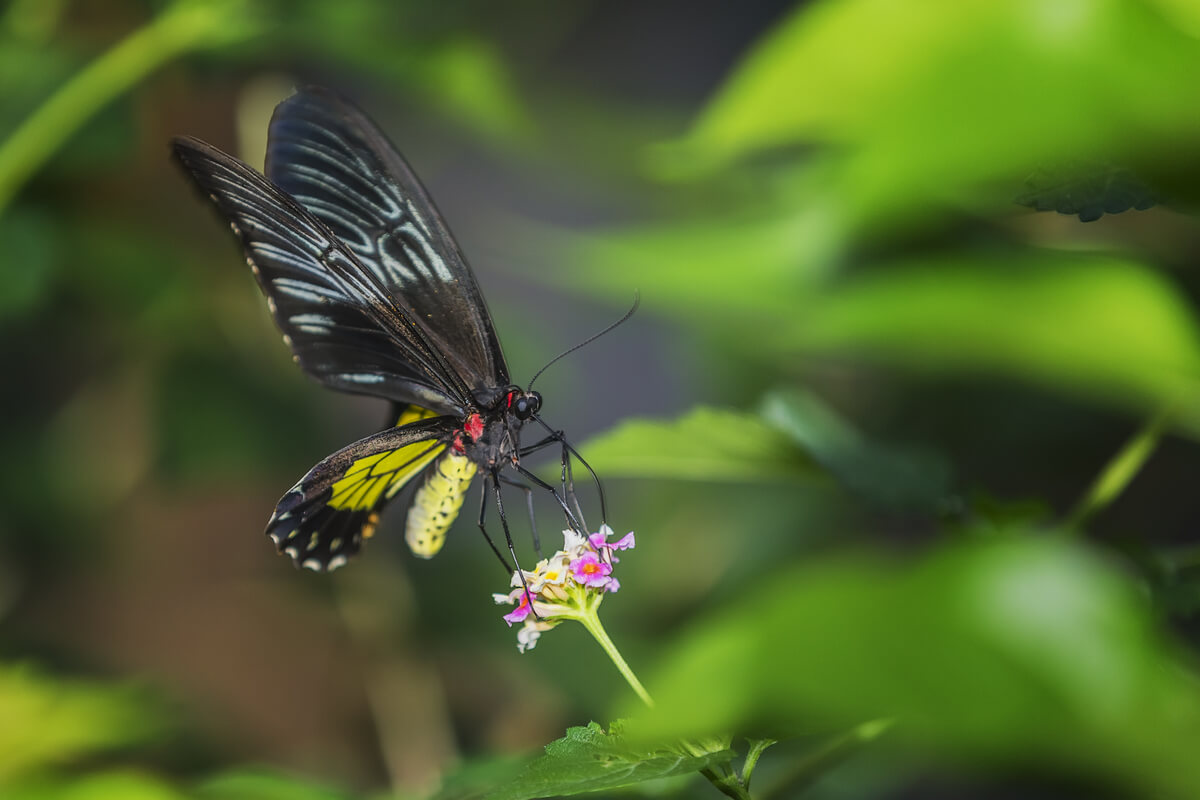
2. Bees
When it comes to pollinators, bees are certainly one of the first animals that come to mind. They have great ecological importance in agroecosystems, since a large part of the food we eat depends directly or indirectly on them.
Thanks to their constant search for nectar, bees and flowering plants have a great relationship, as they allow their reproduction and, in addition, they also act as bioindicators. If you like honey, one tip to keep in mind – due to the decline in bees – is to buy pure honey from local farmers who use sustainable beekeeping practices.
Another recommendation, if you also want to help bees, is to have plants with flowers rich in pollen and nectar in your yard, always with the help of a professional. This will provide a nesting place and food resources for these important insects.
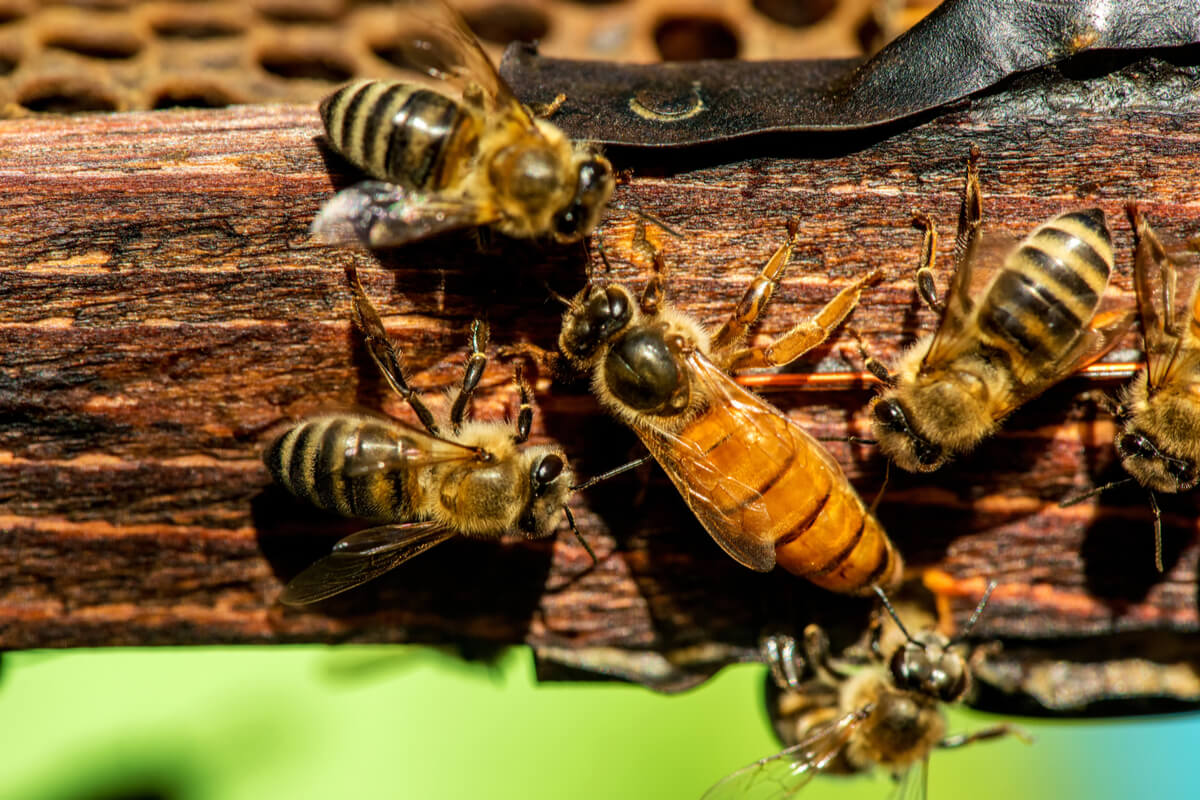
3. Ants
The relationship between plants and ants has often been considered negative by people who aren’t properly informed about their role in ecosystems. However, the benefits of ants in plant pollination are manifold. Hardly any species of ants actually harm plants; in fact, many come into contact with plants and protect them from pests.
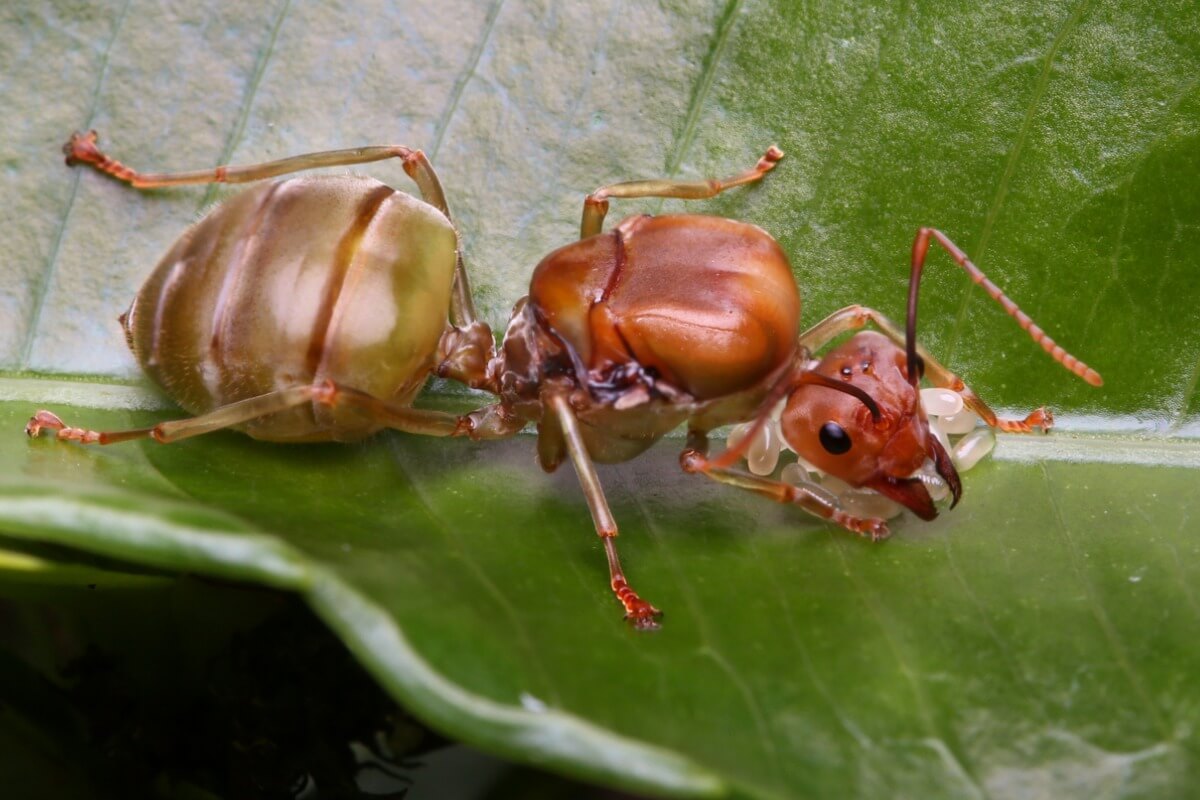
4. Coleoptera
Professional studies state that beetles – unlike the other insects that feed on the nectar of the flowers – consume parts of the flowers and, in this way, the pollen adheres to their bodies. In cross-pollination in tropical forest species, they fulfill a fundamental task. They’re attracted to the scents of flowers and use their spaces to copulate and lay their eggs.
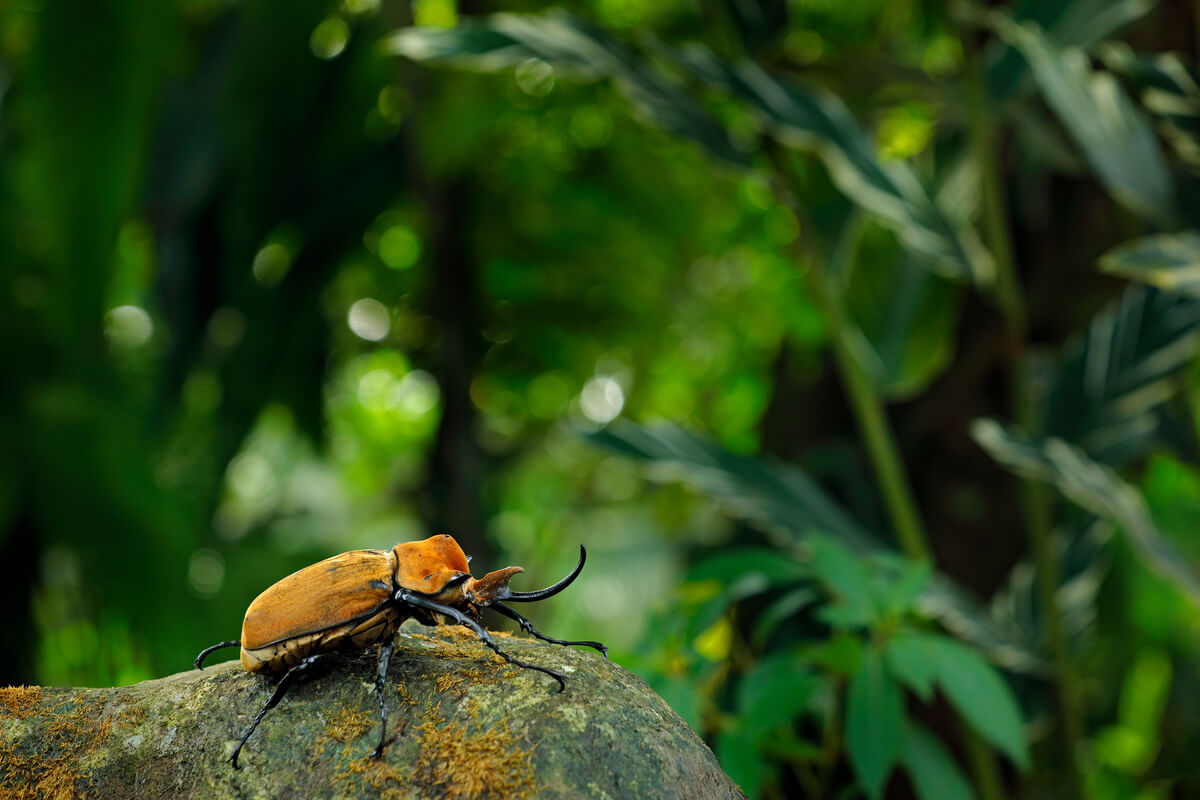
5. Mosquitoes
Mosquitoes can be quite annoying creatures. They spread disease, pollute lakes and swamps, and their company is anything but pleasant. However, according to experts, these invertebrates provide diverse environmental tasks, including the pollination of plants. Orchids are a clear example of plants benefiting from their actions.
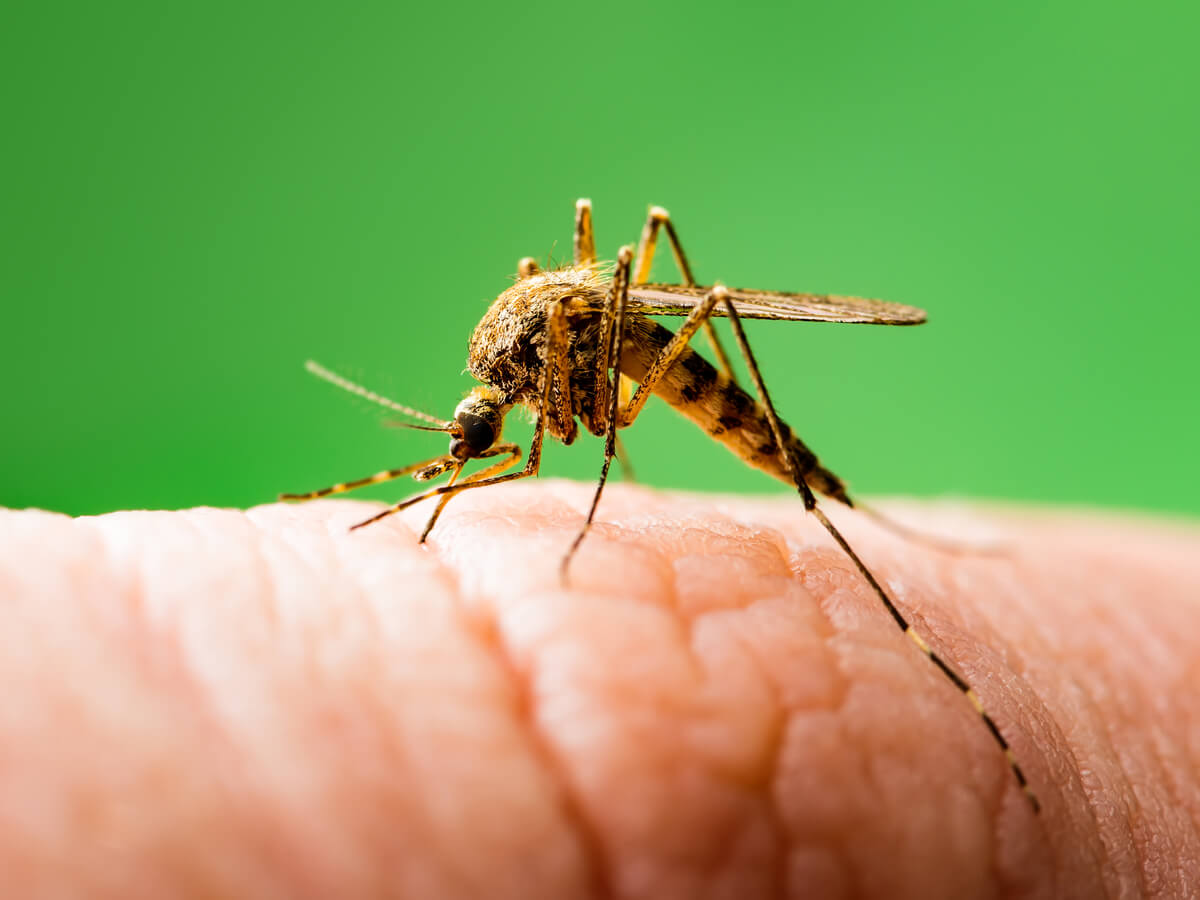
6. Bumblebees
There’s a lot of talk about bees and there are campaigns that are trying to save their lives, and preserve the food they help to create. And yet their direct relative – the bumblebee – which plays an equally crucial role in crop pollination, is hardly taken into account.
These Hymenopterans have also suffered a great loss in their species. According to the BBC, they have characteristics that make them more efficient at pollinating crops such as tomatoes and a wide variety of wild flowers.
Bumblebees use a method known as buzz pollination, which is more efficient than that of bees on the tomato plant (for example), which only release pollen through vibration. This task is easier for bumblebees, thanks to their size and vibratory capacity.
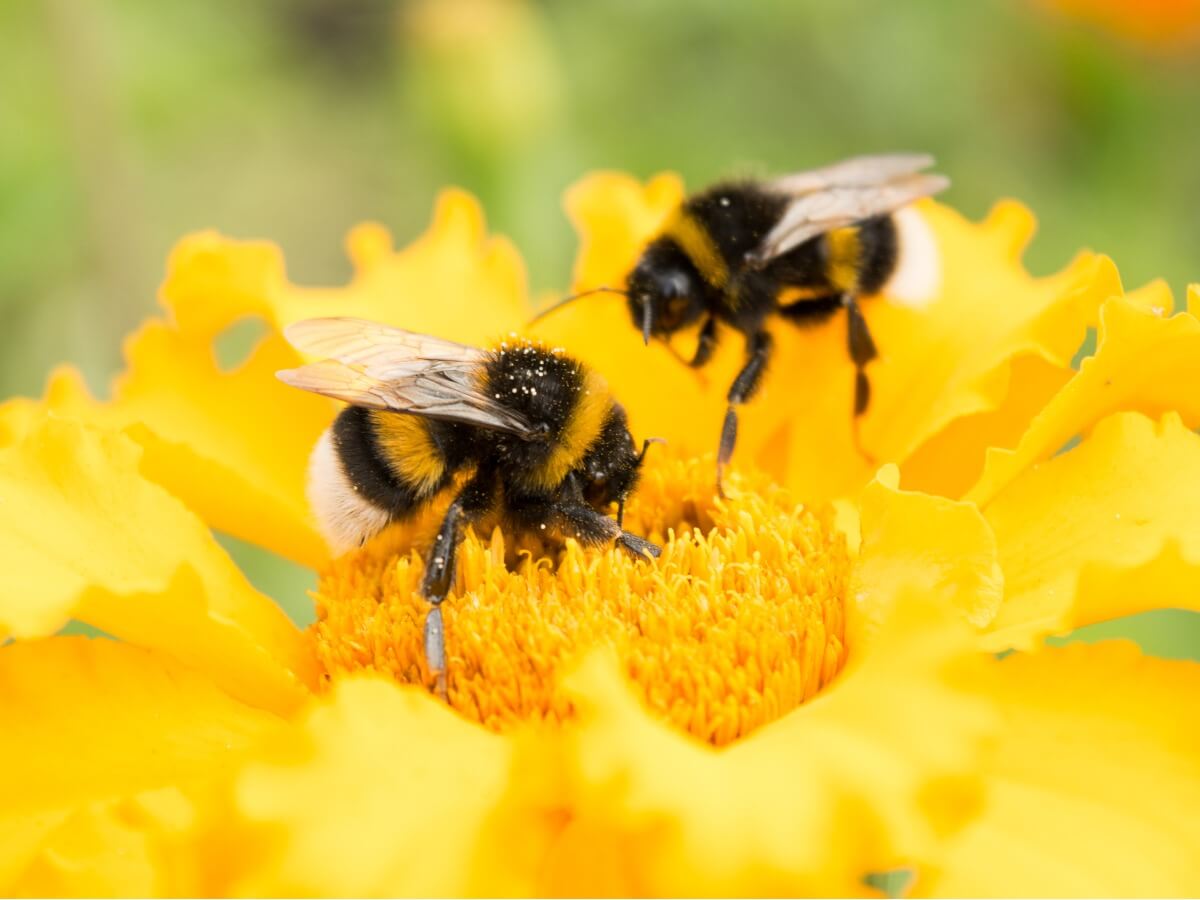
7. Wasps
Wasps are another insect that pollinates plants. One of their favorites are some species of the Moraceae family. In these plants, the wasps carry out their process of development, reproduction and at the same time they pollinate as they go from one flower to another.
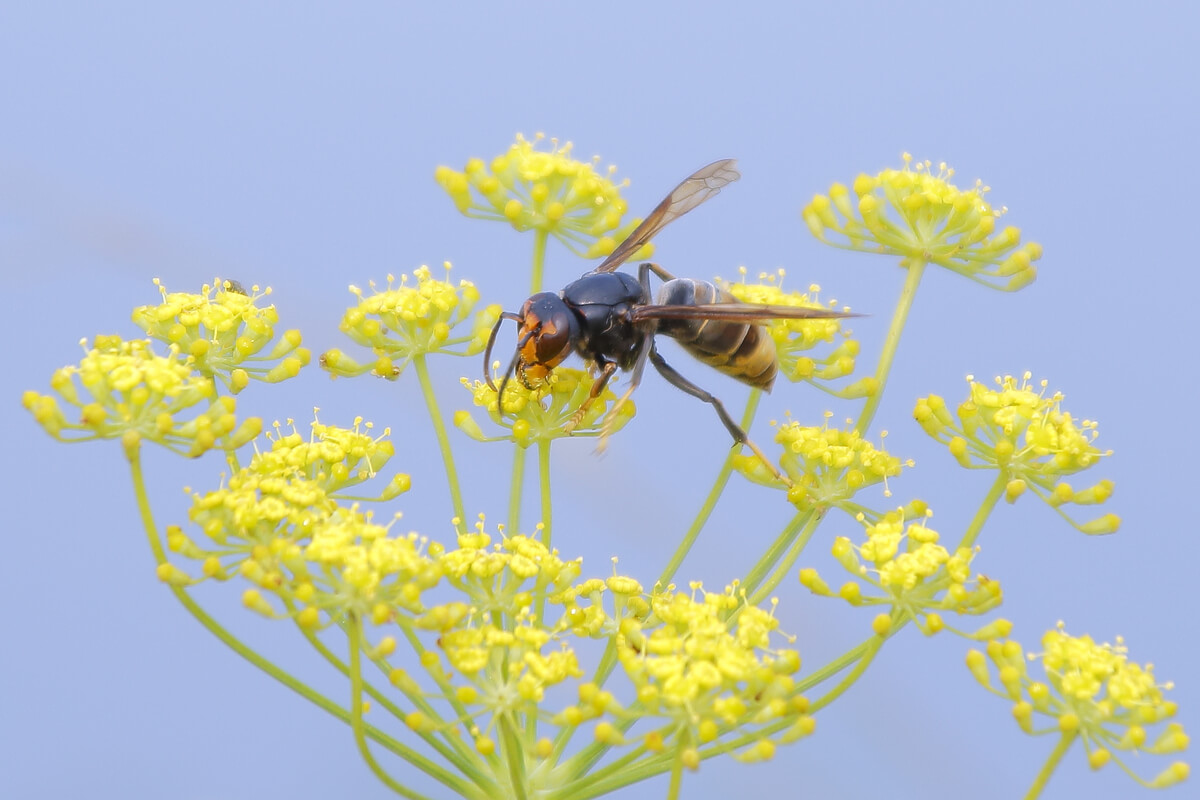
8. Hoverflies (or flower flies)
The bad reputation of hoverflies (also called flower flies) has hidden the fact that they’re essential pollinating insects for several ecosystems, thanks to their prowess in flight and biological adaptability, so says National Geographic.
These flies are also important for crop health, and their presence can be manipulated by decaying organisms to enhance the life of certain plants, vegetables, and fruits. Attracted by these organisms, they leave their eggs there and then feed on the nectar of the closest flowers. This is how they impregnate the pollen and carry it from plant to plant.
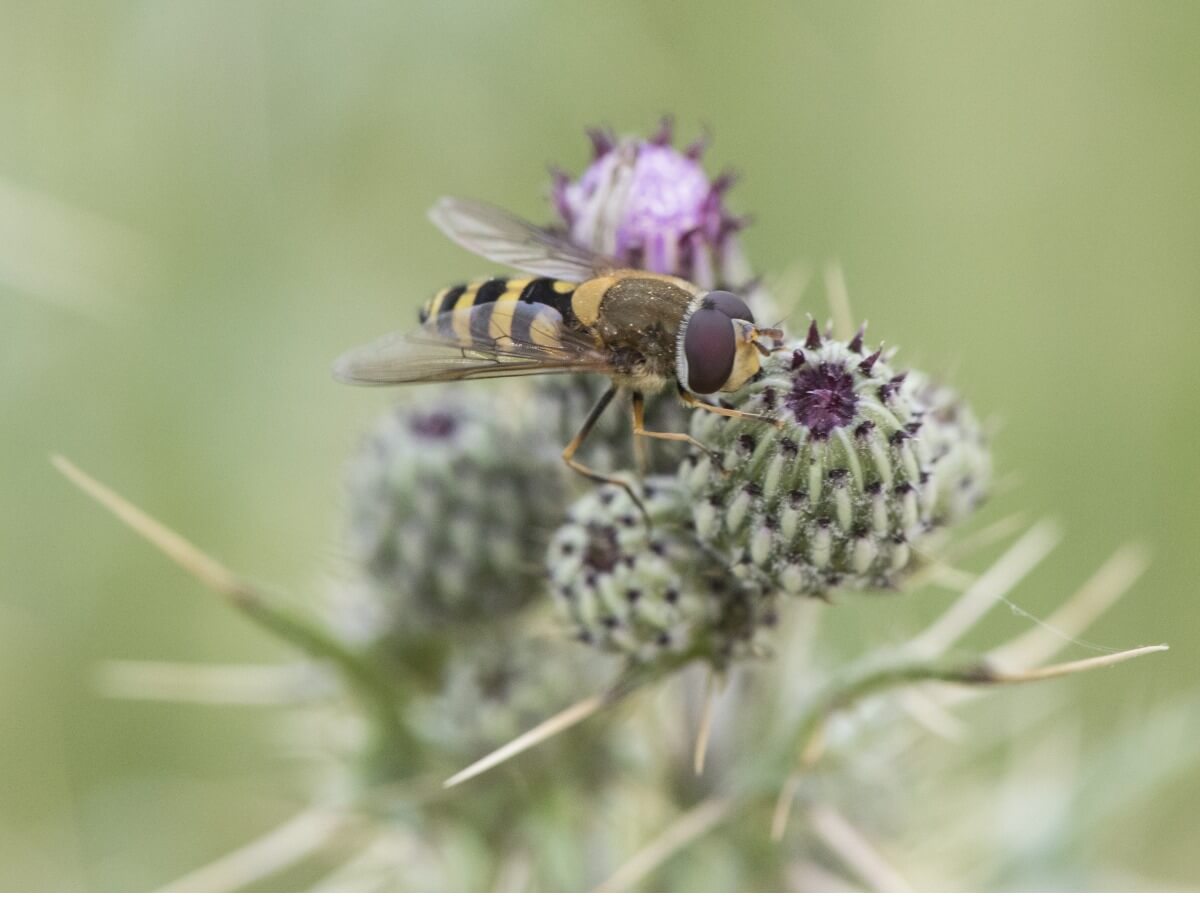
Pollinating animals that aren’t insects
Animals such as birds, rodents, and mammals —among others— also fulfill an essential fertilization function in our ecosystems. Here are some of these pollinating animals that don’t belong to the group of insects.
9. Hummingbirds
The Audubon Foundation describes hummingbirds as birds that behave like insects; some scientists even call them “feathered bees.” They also fly from flower to flower to feed on nectar and thus spread pollen between the flowers.
In North and South America, about 8000 species of plants depend on these little birds, which are most attracted to red, pink, yellow, and orange flowers. Also, hummingbird beaks are specialized for certain flowers: long beaks for long ones, curved beaks for curved flowers, and so on.

10. Day gecko
This insectivorous lizard licks nectar from tree flowers. While visiting various flowers, the pollen soaks into its face and feet and is spread as it goes. They’re rare pollinating reptiles and their function can be replaced by other animals.
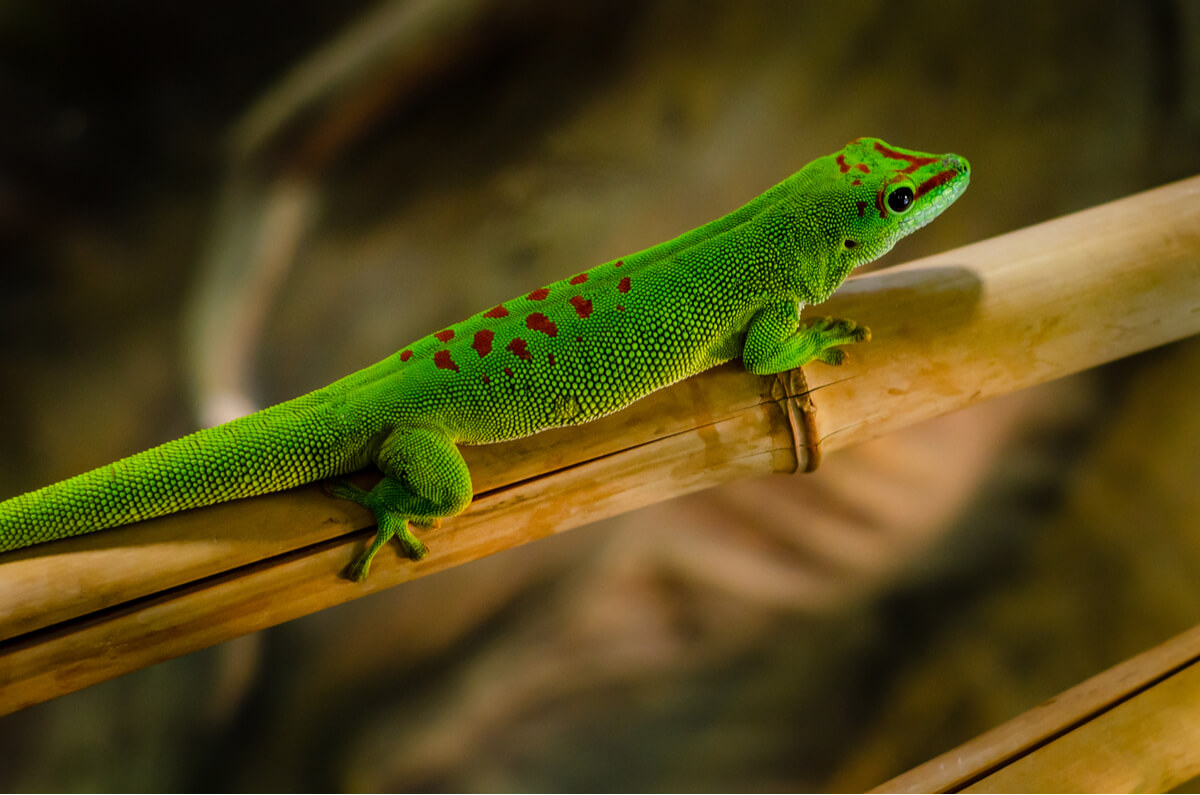
11. Slugs
Although these creatures are quite rare pollinators, they can do this by distributing pollen as they crawl on plants, just like snails. These invertebrates are part of the group of gastropod mollusks.
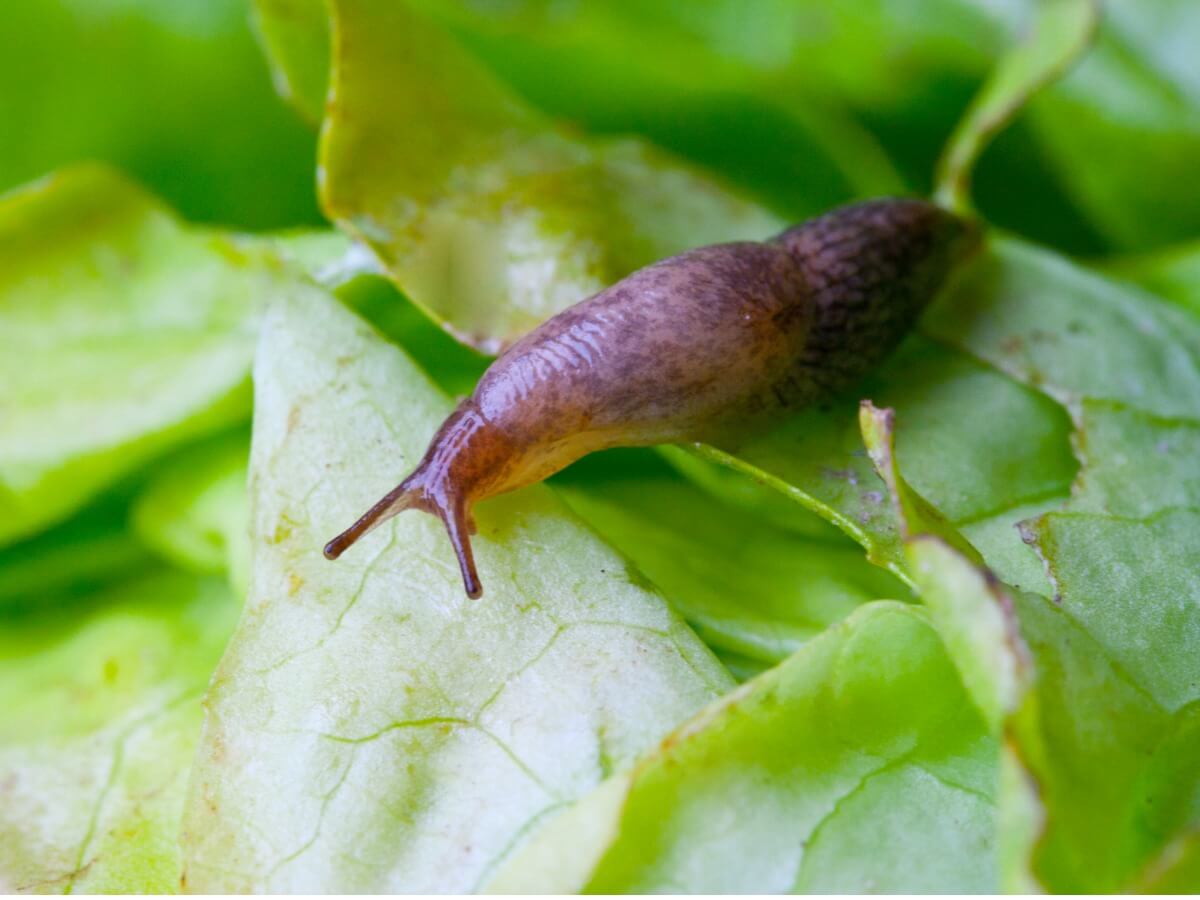
12. Highland small rice rat (Microryzomys altissimus)
This small mammal is found in the Andes of Colombia, Ecuador, and Peru. It usually lives in the Sierra and on both sides of the Andes in the moorlands and temperate and high Andean forests, says Mammals of Ecuador.
The highland small rice rat serves as an example to demonstrate the existence of pollinating rodents. Thanks to the fact that it visits the flowers of the Oreocallis grandiflora plant, it can be a potential carrier (albeit unknowingly) of its pollen, as the pollen sticks to its fur.
13. Sunbirds
Sunbirds are all birds that belong to the Nectariniidae family. These little ones feed on nectar and insects to a greater extent, especially when they have young. They live in Africa and Oceania. These pollinating animals are similar in nectarivorous lifestyle to hummingbirds. Their beaks are long and curved, adapted to different types of flowers.
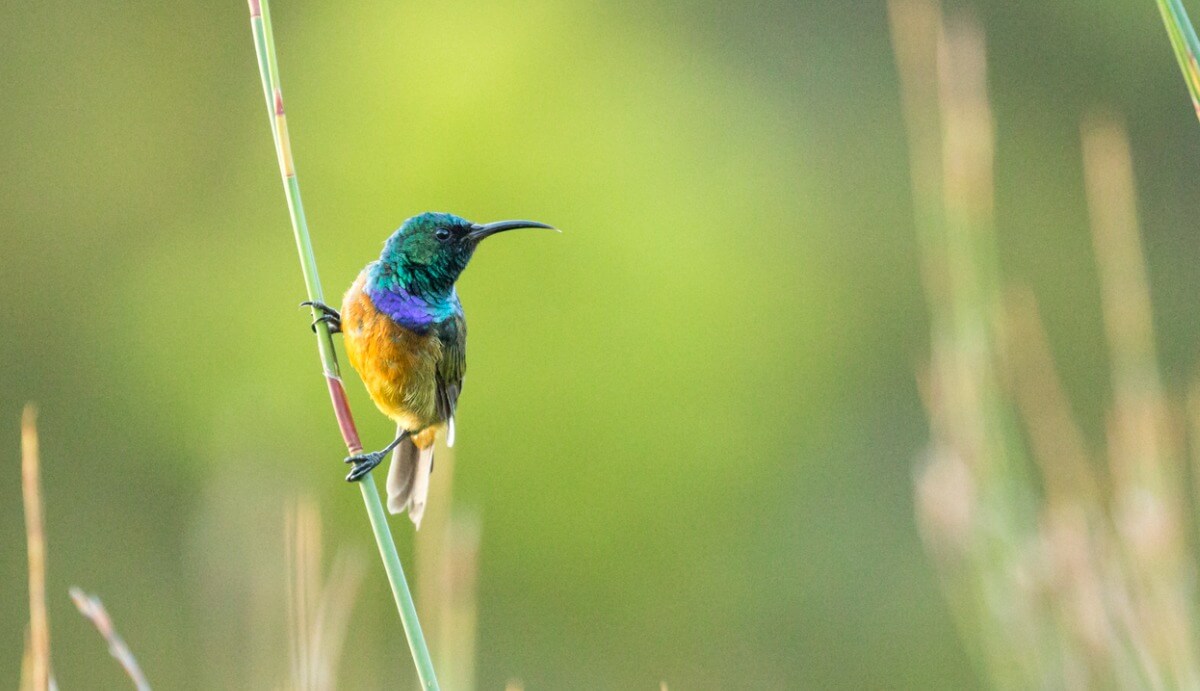
14. Lesser long-nosed bat (Leptonycteris yerbabuenae)
This bat is native to northern Central America and southern North America. It doesn’t measure any more than 9 centimeters (just under 4 inches). It’s a large pollinator – like many other bats – and its long, narrow face is designed to access the flowers far more easily.
EcuRed says that this mammal feeds mainly on the nectar and pollen of silk trees and some cacti. It’s also considered one of the main pollinators of the agave species.
15. Lemur
This is a great example of mammals that pollinate. Even though they can’t fly, they still contribute to this important task. The lemurs of Madagascar, with their small hands, pluck the stems of the flowers and the pollen sticks to their dense fur. The same is true of possums and other rainforest monkeys.

Pollinating animals today
Currently, the number of pollinators has decreased considerably. Approximately 35% of invertebrate pollinators and 17% of vertebrates are in danger of extinction worldwide, according to FAO figures.
Farmers are responsible for protecting our pollinators, but you can also help by planting indigenous plants, supporting local farmers, avoiding pesticides, fungicides or herbicides, and expanding your knowledge about these wonderful beings. Conservation is the task of each and every one of the planet’s inhabitants.
All cited sources were thoroughly reviewed by our team to ensure their quality, reliability, currency, and validity. The bibliography of this article was considered reliable and of academic or scientific accuracy.
BBC Mundo. (s. f.). BBC Mundo – Noticias – El abejorro, el «pariente pobre» de las abejas, requiere protecciÃ3n. BBC. Recuperado 28 de junio de 2021, de https://www.bbc.com/mundo/noticias/2012/08/120813_abejorro_am
Casa de la Miel. (s. f.). Los tipos de polinización | Casa de la miel. Recuperado 28 de junio de 2021, de https://www.casadelamiel.org/es/los-tipos-de-polinizacion
colaboradores de Wikipedia. (2020, 22 junio). Nectariniidae. Wikipedia, la enciclopedia libre. https://es.wikipedia.org/wiki/Nectariniidae
de Vega, C., & Gómez, J. (2014). Polinización por hormigas: conceptos, evidencias y futurasdirecciones. Revista Ecosistemas, 23(3), 48–57. https://webcache.googleusercontent.com/search?q=cache:HbpQlwKF0PUJ:https://www.revistaecosistemas.net/index.php/ecosistemas/article/view/872/849+&cd=6&hl=es-419&ct=clnk&gl=co
Delgado, S. (2020, 31 octubre). Los escarabajos (Coleoptera) en la polinización de cultivos. Metroflor. https://www.metroflorcolombia.com/los-escarabajos-coleoptera-en-la-polinizacion-de-cultivos/
EcuRed. (s. f.). Leptonycteris yerbabuenae – EcuRed. Recuperado 28 de junio de 2021, de https://www.ecured.cu/Leptonycteris_yerbabuenae
FAO. (2014). Principios y avances sobre polinización (1.a ed.). FAO. http://www.fao.org/3/i3547s/i3547s.pdf
FAO. (2018, 17 mayo). Es hora de apreciar la labor de los polinizadores. Food and Agriculture Organization of the United Nations. http://www.fao.org/fao-stories/article/es/c/1129811/
Fischer, A. (2021, 16 marzo). Aunque no lo creas, las moscas también ayudan a la polinización y son vitales para producir frutas y verduras. National Geographic en Español. https://www.ngenespanol.com/animales/aunque-no-lo-creas-las-moscas-tambien-ayudan-a-la-polinizacion-y-son-vitales-para-producir-frutas-y-verduras/amp/
Innovatione AgroFood Design. (2021, 6 febrero). Polinización: tipos y polinizadores en el campo. Innovatione. https://innovatione.eu/2019/06/17/polinizacion/
Jeffries, M. (2016, 8 febrero). ¿Por qué no borramos a los mosquitos de la faz de la Tierra? EL PAÍS. https://elpais.com/elpais/2016/02/08/buenavida/1454940495_205793.html
Metropol. (2019, 21 octubre). Una alianza para estudiar las mariposas y las abejas. Area Metropolitana del Valle de Aburrá. https://www.metropol.gov.co/Paginas/Noticias/una-alianza-en-pleno-vuelo-para-estudiar-las-mariposas-y-las-abejas-de-las-areas-protegidas.aspx
National Audubon Society. (2020, 29 abril). Práctica de Polinización de Colibríes. Audubon. https://www.audubon.org/es/news/practica-de-polinizacion-de-colibries
National Geographic. (2019, 22 febrero). Animales polinizadores: con el polen a cuestas. www.nationalgeographic.com.es. https://www.nationalgeographic.com.es/naturaleza/grandes-reportajes/animales-polinizadores_4423/3#slide-2
PUCE. (s. f.). Microryzomys altissimus. Mamíferos Del Ecuador. Recuperado 28 de junio de 2021, de https://bioweb.bio/faunaweb/mammaliaweb/FichaEspecie/Microryzomys%20altissimus
This text is provided for informational purposes only and does not replace consultation with a professional. If in doubt, consult your specialist.